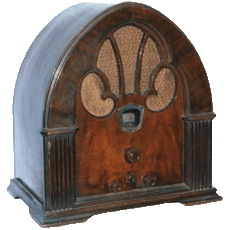Posts: 7,300
Threads: 268
Joined: Dec 2009
City: Roslyn Pa
Tnx Mike for the explanation but I'm no RS when it comes to math (and lots of other things!!) I do admirer folks that know how to use math but it just looks like hieroglyphics to me, Sorry! Do appreciate your help!!
The original cord is suppose to be good but I thought I might like to experiment with the condenser to get away from the heat and asbestos.
Hi Bill Tnx for the link! At 7.5uf where does that put me in terms of voltage/current. Mike sez it needs to be about 6.7uf?
Terry
Posts: 16,489
Threads: 573
Joined: Oct 2011
City: Jackson
State, Province, Country: NJ
Since you are dropping almost 85% of the voltage you can roughly say that decreasing Rc by x% will raise the load voltage by the same x%.
So if you wanted your fil. voltage to be 18 V it now will be roughly 20V.
But since you drop most volts across the cap, you can add a little resistor and correct it.
As for the math, it is really arithmetics here, the most complex operation being the square root. 6th grade if even that. I am sure this can be understod by anyone once the fear of using calculator is overcome.
Posts: 7,300
Threads: 268
Joined: Dec 2009
City: Roslyn Pa
At 30 Watts. Hmmmm Going to be big and Hot!
Terry
Posts: 16,489
Threads: 573
Joined: Oct 2011
City: Jackson
State, Province, Country: NJ
Posts: 7,300
Threads: 268
Joined: Dec 2009
City: Roslyn Pa
Sorry It was past my night night time. A few volts at 300ma is only a few watts.
Wasn't thinking.
Terry
Posts: 4,434
Threads: 419
Joined: Jun 2011
City: Boston
State, Province, Country: Massachusetts
That one in the Radiola guy photo is awesome.
Paul
Tubetalk1
Posts: 16,489
Threads: 573
Joined: Oct 2011
City: Jackson
State, Province, Country: NJ
Posts: 4,869
Threads: 54
Joined: Sep 2008
City: Sandwick, BC, CA
It looks sort of like a balanced armature permanent magnet type, those were quite common in farm battery radios in that era since G.E had not yet come out with alnico 5 at the time to allow for a PM dynamic. Take a look at the volume control, it's mechanical, it looks like it uses that slide thing to put tension on that reed. International Radio was in large part responsible for developing what is now known as the AC/DC set, and they were pioneers in the use of plastic cabinets, at least in North America.
Regards
Arran



![[-] [-]](https://philcoradio.com/phorum/images/bootbb/collapse.png)


